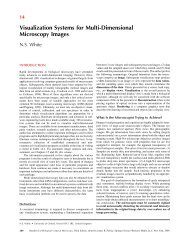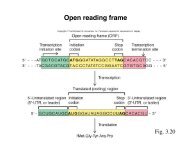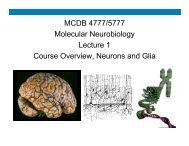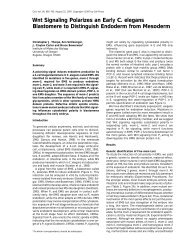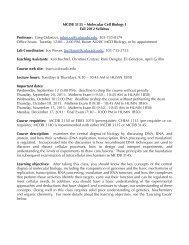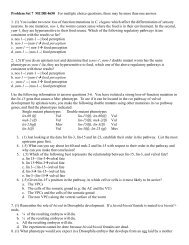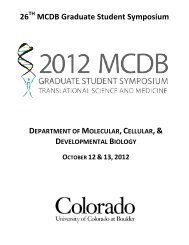Lecture 3: A Brief Overview of Molecular Phylogeny - MCD Biology
Lecture 3: A Brief Overview of Molecular Phylogeny - MCD Biology
Lecture 3: A Brief Overview of Molecular Phylogeny - MCD Biology
Create successful ePaper yourself
Turn your PDF publications into a flip-book with our unique Google optimized e-Paper software.
7<br />
Vignette: Poisson Statistics<br />
1. Poisson Statistics describes distributions <strong>of</strong> discrete and small numbers. It is <strong>of</strong>ten useful in biology and in<br />
thinking about the set-up and interpretation <strong>of</strong> experiments. You probably will see a problem similar to these on<br />
Midterm I.<br />
2. P = probability <strong>of</strong> event: Q = probability <strong>of</strong> non-event.<br />
P+Q = 1<br />
A. Remember also that probabilities multiply:<br />
P(x,y) = P(x)•P(y)<br />
3. For small (discrete) numbers:<br />
P(x) = mx<br />
x! e!m<br />
Where: x = number <strong>of</strong> events<br />
m = mean number <strong>of</strong> events<br />
P(x) = probability <strong>of</strong> x events<br />
4. This expression is useful for all sorts <strong>of</strong> experimental considerations and problems. e.g.:<br />
Problem 1: You are interested in determining the "burst size" <strong>of</strong> a bacteriophage growing on E. coli. In order to do<br />
that, you mix suspensions <strong>of</strong> phage and E. coli as follows:





